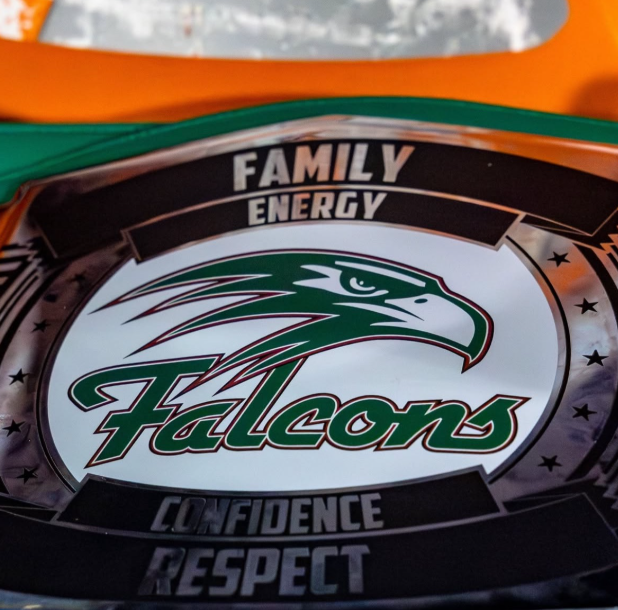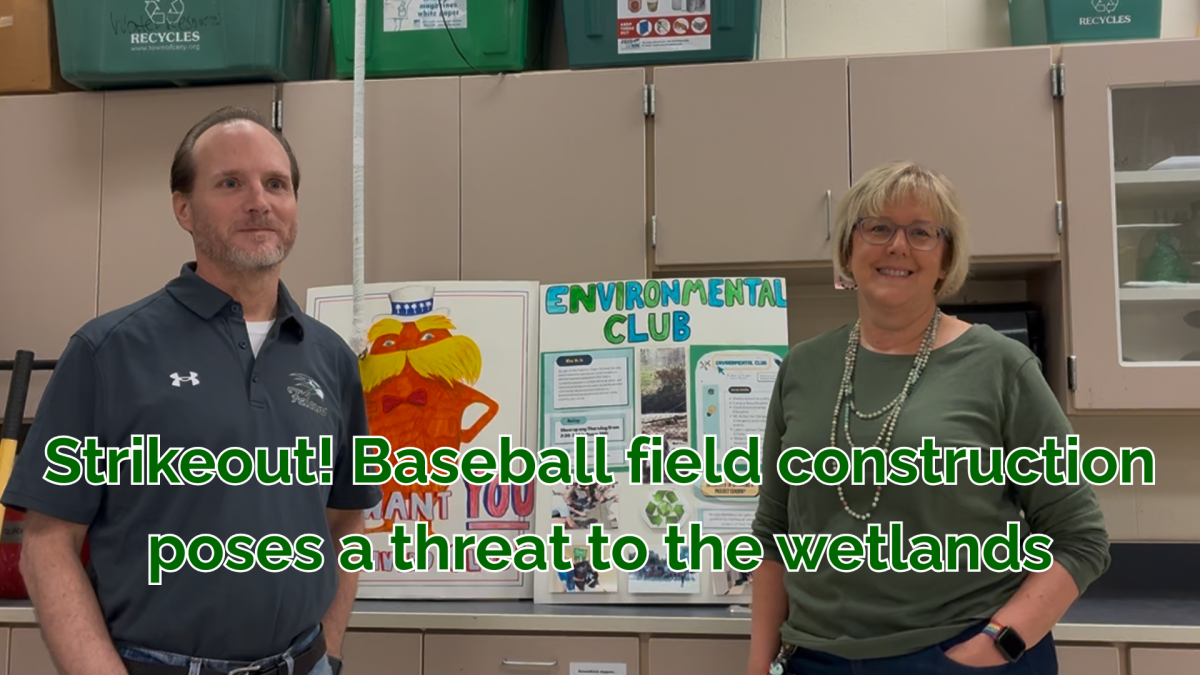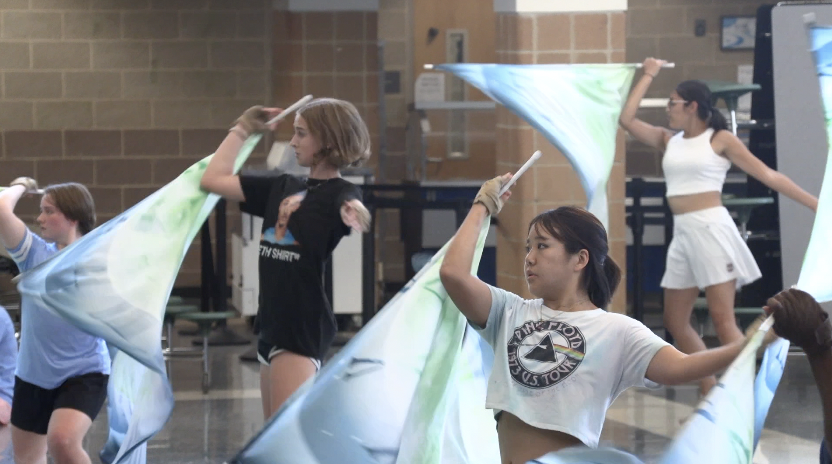Only one animated movie has ever been nominated for cinema’s highest award, the Oscar, for Best Picture. That movie was “Beauty and the Beast,” which was nominated in 1991, marking almost a quarter of a century since the last time an animated film was nominated for the category. Amid the long absence of animated films in the category, one film stands out as the one to break the streak this year. That movie is DreamWorks Animation’s “The Wild Robot.”
“The Wild Robot” was released in theaters on Sept. 27 after premiering at a festival six days earlier. It was met with near universal praise, debuting with a perfect score on review aggregator Rotten Tomatoes. Four months later, it’s pretty clear that it deserved all of that praise.
The movie starts quick and continues with that pacing through the first half, following the story of robot ROZZUM Unit 7134 (Lupita Nyong’o), an android built by the fictional company Universal Dynamics to complete tasks required by humans. Unfortunately for the robot, nicknamed Roz, she has crashed on a remote island filled with animals that don’t speak English. Roz’s inability to communicate with the animals leads to her accidentally terrorizing them, earning a reputation as an unredeemable monster.
Roz then hibernates for an indeterminate amount of time while she learns the language of the animals. She also gets many of her parts stolen by the same animals she’s trying to communicate with, but her efforts to get those parts back lead to the introduction of the meat of the film. While running away from the thieving animals, Roz accidentally lands on a goose’s nest, killing the mother and all but one of the eggs. Following this event, a mother possum (Catherine O’Hara) gives Roz a task: raise the one goose remaining from the nest by feeding it and teaching it to fly and swim before the winter comes.
With the help of a fox named Fink (Pedro Pascal), Roz is able to raise the goose. However, as winter approaches, Roz hasn’t made much headway into the last two tasks. This is where one of the main themes of the movie comes into play. The goose, named Brightbill, is a runt– he’s smaller, weaker and seemingly less capable than the other geese. Most importantly, he wasn’t raised by a mother goose, so he doesn’t talk like a goose, he doesn’t act like a goose and he doesn’t have a lot of the same skills as a goose. He’s an outcast.
The movie makes it clear that because Brightbill was disadvantaged from birth, he would stay disadvantaged to the point that without Roz, Brightbill would have died quickly. Because Roz saved and raised him, Brightbill isn’t accepted into mainstream goose society, and the only way Brightbill can live is as an outsider.
This is a very downbeat message that the film lives in for quite a while, and the writers do a great job at making the audience feel it. Further compounding the movie’s message, other geese reveal to Brightbill that Roz killed his family, forming a rift between them. During the rift however, Roz has to save Brightbill due to an alligator attack, and loses part of her leg in the process. Still, Brightbill refuses to talk to her. It’s at this moment that Fink delivers one of the most impactful lines of the entire movie. “Will he ever talk to us again?”
The message of painful divides is very well portrayed in the film. Brightbill doesn’t feel kinship with the one that raised him, but he can’t find friendships in the other geese. Roz, having started as an outsider, lost the one animal that loved her. This emotional impact is something that is seen consistently in the movies the Academy picks as Oscar Best Picture nominees. “Everything Everywhere All At Once,” “CODA” and “Parasite” have all had emotional moments parallel to the ones in “The Wild Robot,” and all three won Best Picture.
Love is also one of the main topics explored by Roz’s character arc. Midway through the movie, she finds and talks to another ROZZUM unit that had been stranded on the island. Though the other ROZZUM is damaged, it knows one thing: Roz is emotionally broken. Roz’s interactions with Brightbill and her experience as a mother to the runt gosling has expanded her emotional capacity beyond what Universal Dynamics programmed. She loves Brightbill, but all she should care for is her task. Quality films focusing on family dynamics also tend to be popular among awards categories, with many of the recent nominees tackling the topic.
It takes the support of an elder goose for Brightbill and Roz to make up. A goose named Longneck (Bill Nighy) takes an interest in Roz’s training for Brightbill’s flight, suggesting a challenge of endurance. Brightbill is required to stay in the air for 24 hours without landing, and upon completing the challenge, Brightbill is accepted into the migration team that will go south for the winter. After Brightbill leaves, Roz sees herself as having completed her task. She attempts to contact Universal Dynamics to take her back, although quickly has a change of heart. This alerts the Universal Dynamics headquarters of Roz’s location, which happens to coincide with the migration of the geese flying overhead. There, it is shown that humans exist in a totally self-controlled environment, meticulously regulated by Universal Dynamics in a setup that seems hauntingly exclusionist, isolated and freakishly real.
After Brightbill returns to the island, the movie focuses on Universal Dynamics’ attempts to return Roz to their modern dystopia. They try to turn her into just another cog in the Universal Dynamics machine.
The fact that Roz had formed a significant connection with Brightbill is what ended up saving her. Universal Dynamics wiped her memory, but the mere presence of Brightbill brought it all back.
The movie is about the persistence of memory and love. It explores the struggles of women and how society perceives them. It talks about how precious every moment of life truly is. Pair that with the beautiful watercolor animation, and “The Wild Robot” stands as a legitimate contender for the best film of the year, and should have a shot at a nod for Best Picture.
The writing in the film is excellent. There is no line that fails to hit, and excellent performances from the entire voice cast drives the movie. The movie is also quite funny. It doesn’t rely on the basic slapstick generalizable humor that many modern studio pictures pretend is funny. Instead, the humor in the movie is witty, relevant to its story and complex. The writing takes an audience through many emotions, prompting them to laugh at the high moments and cry at the hardest-hitting. Everything the movie tries to execute, it succeeds at.
In the world of Hollywood, animation tends to get the short end of the stick. Far too many studios see animation less as a medium and more as a genre, as proven by the countless live-action remakes of classic movies released recently. Animation is seen as a form of expression reserved for children that is easily replaceable by more “adult” live-action films. In such a treacherous time for animated movies, it’s refreshing to see a movie that so easily proves the value of animation, and leaps over any live-action movie released this year in terms of quality.










































































